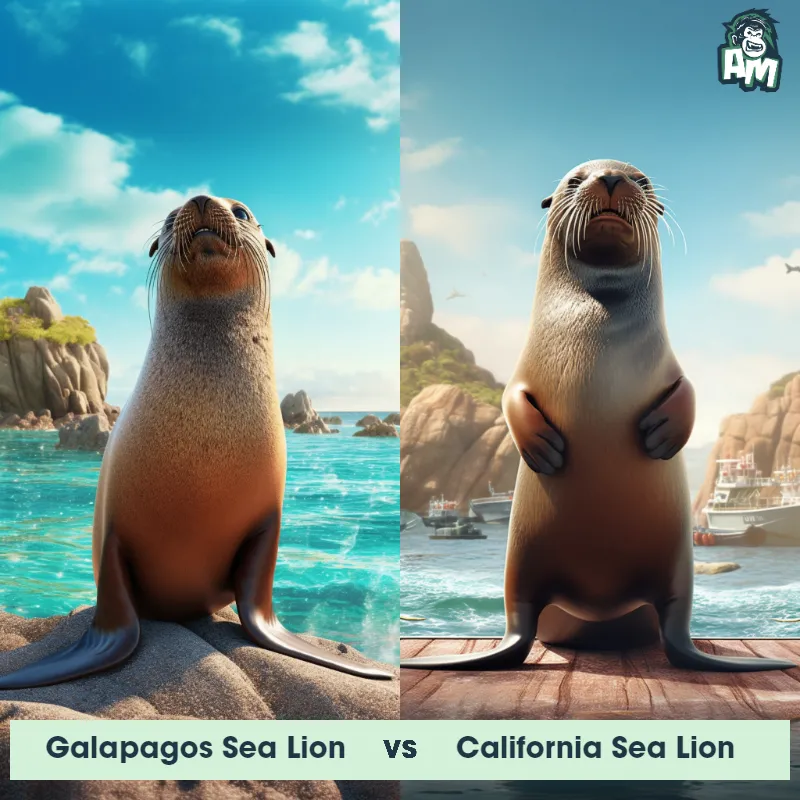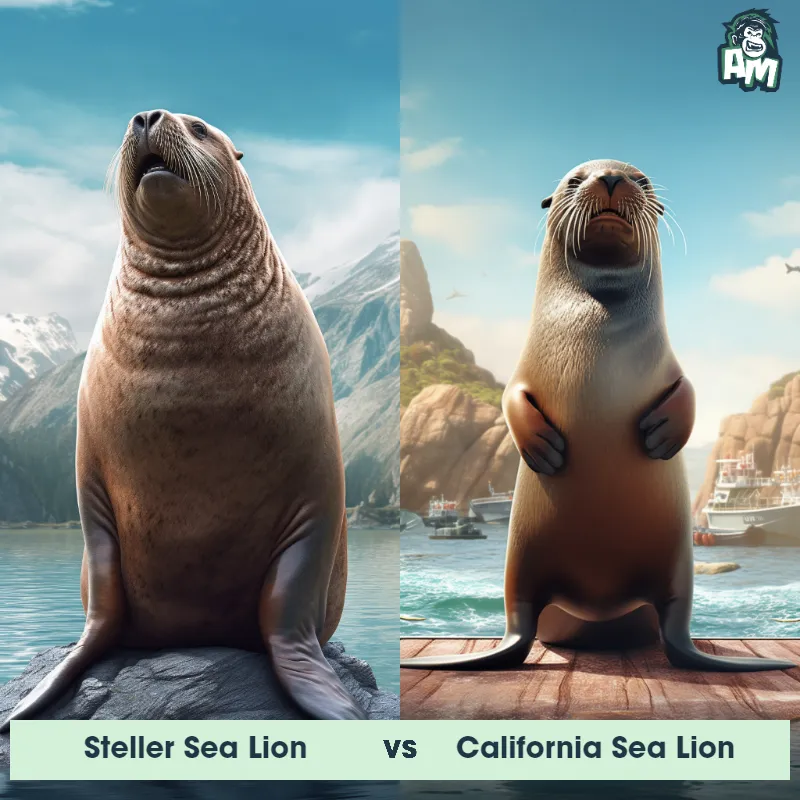The California Sea Lion
The California Sea Lion, also known as Zalophus californianus, is a marine mammal found along the Pacific coast of North America. It is recognized for its distinct physical appearance, characterized by a streamlined body, a short snout, and large flippers. Adult males are typically larger than females, reaching lengths of up to 8 feet and weighing up to 800 pounds. They have a brown to dark chocolate-colored fur, while females and juveniles have a lighter brown coloration. California Sea Lions are highly social animals and are often seen forming colonies on rocky shores or man-made structures.

| California Sea Lion | |
|---|---|
| Size | 6-7 feet (1.8-2.1 meters) |
| Weight | 440-880 pounds (200-400 kilograms) |
| Speed | Speed: 25 mph (40 km/hr) |
| Key Strength | Powerful jaws and sharp teeth |
| Biggest Weakness | Vulnerable to attacks on land |
| Scientific Name | Zalophus Californianus |
| Family | Otariidae |
| Habitat | Coastal areas, rocky shores, and islands |
| Geography | Pacific Ocean, from Alaska to Mexico |
| Diet | Fish, squid, octopus, and crustaceans |
| Lifespan | 20 years - 30 years |

The California Sea Lion
The California Sea Lion, also known as Zalophus californianus, is a marine mammal found along the Pacific coast of North America. It is recognized for its distinct physical appearance, characterized by a streamlined body, a short snout, and large flippers. Adult males are typically larger than females, reaching lengths of up to 8 feet and weighing up to 800 pounds. They have a brown to dark chocolate-colored fur, while females and juveniles have a lighter brown coloration. California Sea Lions are highly social animals and are often seen forming colonies on rocky shores or man-made structures.
Fun Fact: California Sea Lions are known for their incredible agility underwater and can reach swimming speeds up to 25 miles per hour.
| California Sea Lion | |
|---|---|
| Size | 6-7 feet (1.8-2.1 meters) |
| Weight | 440-880 pounds (200-400 kilograms) |
| Speed | Speed: 25 mph (40 km/hr) |
| Key Strength | Powerful jaws and sharp teeth |
| Biggest Weakness | Vulnerable to attacks on land |
| Scientific Name | Zalophus Californianus |
| Family | Otariidae |
| Habitat | Coastal areas, rocky shores, and islands |
| Geography | Pacific Ocean, from Alaska to Mexico |
| Diet | Fish, squid, octopus, and crustaceans |
| Lifespan | 20 years - 30 years |
California Sea Lion Matchups
We use AI to simulate matchups between the California Sea Lion and other animals. Our simulation considers size, strength, and natural predatory behaviors to determine the most likely outcome.

Can't find the Matchup you want?
Create Your Own MatchupCalifornia Sea Lion: Diet, Predators, Aggression, and Defensive Behaviors
What do California Sea Lions eat?
California Sea Lions primarily feed on a variety of fish such as herring, anchovies, mackerel, and squid. They are opportunistic feeders and can also consume octopus, crustaceans, and sometimes even small sharks. Their diet varies depending on the availability of prey in their habitat.
Do California Sea Lions have any predators?
In the ocean, California Sea Lions face predation mainly from killer whales and great white sharks. Both of these predators are known to target sea lions as part of their diet. However, adult sea lions are agile swimmers and can often outmaneuver these predators to escape or defend themselves.
Are California Sea Lions aggressive?
California Sea Lions are not inherently aggressive towards humans or other animals unless provoked or feeling threatened. While they may display territorial behavior at times, especially during the breeding season, they are generally known for their playful and curious nature.
Do California Sea Lions fight?
California Sea Lions, especially males, may engage in fights with each other during the breeding season to establish dominance and access to mates. These fights can involve vocalizations, posturing, and physical confrontations such as biting and pushing. The dominant male typically secures mating rights with a group of females.
How do California Sea Lions defend themselves?
California Sea Lions use various strategies to defend themselves from predators or other threats. They are agile swimmers and can quickly escape from dangerous situations by diving underwater or leaping onto land. They may also vocalize loudly or bark to intimidate potential threats and alert other group members.
What is the biggest weakness of California Sea Lions in a fight?
The biggest weakness of California Sea Lions in a fight is their vulnerability on land. While they are highly adapted for swimming and diving in the ocean, their movement on land is slower and less coordinated. Predators or rivals can take advantage of this weakness during confrontations that occur on land, making it difficult for sea lions to defend themselves effectively.
Fun Fact: Unlike their close relatives, the seals, California Sea Lions have the ability to rotate their hind flippers forward, allowing them to move easily on land.
Fun Fact: California Sea Lions are highly vocal animals and communicate with various sounds including barks, growls, and honks. Males often emit loud vocalizations during dominance disputes.












